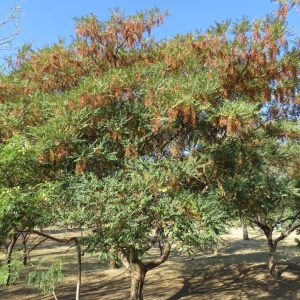Description
Ficus Religiosa, commonly known as the sacred fig or bodhi tree, is a large, deciduous tree native to the Indian subcontinent. Particularly in the Himalayan foothills, and parts of Southeast Asia. Several cultures regard this species as majestic and revere it. Particularly in Buddhism and Hinduism, where it is sacred. As it is believed that Buddha achieved enlightenment while meditating under a bodhi tree.
Flowering and Foliage of the Ficus Religiosa Tree
The Ficus Religiosa (sacred fig) is a sizable and spreading tree that may reach heights of 98 feet and have a canopy as wide as 115 feet. It is a single-trunked tree which can reach as big as 9 feet in diameter with a broad, strong, and straight trunk. While the tree is young, its bark is smooth and grayish-white in color, but as it becomes older, it becomes rough with fissures. The branches of the Ficus Religiosa tree (Sacred Fig) are long and drooping, with small aerial roots that can grow down to the ground and establish new trunks. And, the leaves of the tree are large and thin, with a heart-shaped base and pointed tips. Dark green in color and can grow up to 4-8 inches long. Moreover, the flowers of the Ficus Religiosa (Sacred Fig) are tiny and inconspicuous. They are enclosed in a syconium structure in the shape of a fleshy pear. The syconia of the Ficus Religiosa starts out green when young. But, they turns to a yellowish-green or purplish-black color as the they mature. Besides that, the syconium is edible and a source of food for small animals and birds.
Soil Type and Plant Requirements for the Sacred Fig Tree
The bodhi tree prefers organically dense, well-drained soils. It may thrive in a variety of soil types, including clay, lateritic soils, and sandy loam. In addition, the tree can withstand both high and low temperatures, but needs full sun for healthy growth. Its distribution in tropical and subtropical regions, making it an ideal suit for the South Florida landscape.
Bodhi Tree – Landscape Applications
Although the Ficus Religiosa (Sacred Fig) its not as common as its familiar relatives Ficus Aurea, Ficus Rubiginosa or Ficus Benghalensis. Also member of the Moraceae family. It has gained popularity in the last couple of years due primarily used for its cultural significance, and ornamental value. It is quite common in parks, gardens, and along streets because mainly for its attractive, heart-shaped leaves and unique-looking trunk and branches. Also, it’s quite popular for meditation gardens or religious architecture.









